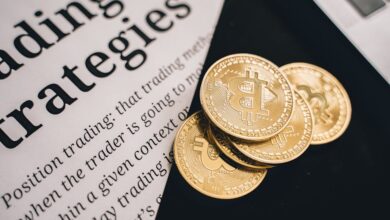Analyzing Gold Prices and Market Trends: Key Drivers, Safe Haven Status, and Global Demand Insights

Gold has long been revered as a valuable asset, serving not only as a currency standard in the past but also as a beacon of stability in today’s volatile financial landscape. As we delve into the intricacies of gold prices and market trends, it becomes essential to understand the key drivers influencing this precious metal’s value. From the impact of inflation on gold as a safe haven asset to the dynamics of global gold demand, including mining, investment opportunities, and the role of central banks, the gold market is multifaceted. In this article, we will explore the latest trends and analysis of gold prices, examining how factors such as gold reserves, gold ETFs, and even the rise of gold and cryptocurrency are shaping the future of gold investment. Whether you are interested in gold bullion, gold coins investing, or sustainable gold mining practices, this comprehensive overview will equip you with valuable insights into the gold market, preparing you for informed decisions in your financial endeavors.
- 1. Understanding Gold Prices: Key Drivers and Market Trends
- 2. The Role of Gold as a Safe Haven Asset in Times of Inflation
- 3. Analyzing Global Gold Demand: From Mining to Investment Opportunities
1. Understanding Gold Prices: Key Drivers and Market Trends
Gold prices are influenced by a myriad of factors that shape the gold market trends we observe today. Understanding these key drivers can help investors make informed decisions about gold investments, whether they are interested in physical gold, gold ETFs, or other forms of gold assets.
One of the primary drivers of gold prices is economic instability. During times of geopolitical tension or economic downturns, gold is often seen as a safe haven asset. Investors flock to gold during these periods, driving up demand and prices. This trend is particularly evident when inflation rates rise, as gold has historically maintained its value against the declining purchasing power of fiat currencies. The relationship between gold and inflation is crucial; as inflation increases, so does the appeal of gold as a hedge.
Central banks also play a significant role in the gold market. Many central banks hold substantial gold reserves as part of their monetary policy strategy. Their buying or selling activities can greatly influence market sentiment and gold prices. When central banks increase their gold holdings, it often signals confidence in the asset, pushing prices higher. Conversely, significant sales can lead to price declines.
Another key factor is global gold demand, driven by various sectors including jewelry, technology, and investment. The luxury gold market, which includes gold jewelry and collectibles, remains a major consumer of gold. Gold technology, such as its use in electronics and renewable energy, also contributes to demand. Additionally, gold mining and production levels affect supply; regions with sustainable gold mining practices are increasingly favored by investors concerned about ethical sourcing.
Gold recycling and refining are other important aspects of the gold market. As the demand for gold increases, so does the practice of recycling gold from old jewelry and electronic devices. This recycled gold can help meet demand without the environmental impact of new mining.
In recent years, the rise of alternative assets, particularly cryptocurrency, has also influenced gold market trends. Some investors view cryptocurrencies as a new form of digital gold, leading to debates over their relationship and respective roles in a diversified investment portfolio.
In summary, understanding the dynamics of gold prices involves analyzing a complex interplay of economic factors, market demand, and investment trends. By keeping an eye on these key drivers, investors can navigate the gold market more effectively, whether they are considering gold coins investing, gold futures, or simply exploring the benefits of holding physical gold.
2. The Role of Gold as a Safe Haven Asset in Times of Inflation
In times of inflation, gold has consistently proven its value as a safe haven asset, attracting investors looking to preserve wealth when economic stability is threatened. The intrinsic value of gold stems from its historical significance and its limited supply, making it a reliable hedge against inflation. When inflation rises, the purchasing power of currency diminishes, prompting investors to turn to gold as a safeguard for their assets.
Gold prices often surge during inflationary periods, as global gold demand increases. Investors frequently choose various forms of gold investments, including gold bullion, gold coins, and gold ETFs, to diversify their portfolios. This trend can be attributed to the perception of gold as a stable and tangible asset compared to the volatility of currencies and other investment vehicles, including cryptocurrency.
Furthermore, central banks around the world actively manage their gold reserves to support their currencies and stabilize their economies. During inflationary times, these institutions may increase their gold purchases, further driving up gold prices. This central bank activity can significantly influence gold market trends, as increased demand from institutional buyers can lead to higher prices for both physical gold and gold futures.
Sustainable gold mining practices also come into play, as the environmental impact of gold production becomes a more pressing concern. Investors are increasingly looking for ethically sourced gold, leading to a rise in gold recycling and the production of luxury gold jewelry made from recycled materials. This growing awareness of sustainability in the gold market reflects a broader trend among consumers who prioritize responsible investment options.
In summary, gold’s role as a safe haven asset during times of inflation is multifaceted. It offers protection against currency devaluation while appealing to both individual investors and central banks alike. With gold prices influenced by market trends, geopolitical events, and economic conditions, ongoing gold market analysis is essential for understanding the dynamics at play. Whether through gold coins investing, gold bars, or gold collectibles, the enduring appeal of gold continues to resonate in the face of inflationary pressures.
3. Analyzing Global Gold Demand: From Mining to Investment Opportunities
Analyzing global gold demand involves a multifaceted approach that considers various factors influencing gold prices and market trends. Gold has long been recognized as a safe haven asset, attracting investors during periods of economic uncertainty and inflation. Understanding the different aspects of gold demand is crucial for anyone interested in gold investment, whether that involves purchasing physical gold, gold ETFs, or gold futures.
The gold market is largely driven by two major components: jewelry and investment. Gold jewelry remains a significant part of global demand, particularly in countries like India and China, where cultural values place a high premium on gold as a symbol of wealth and status. In addition to jewelry, luxury gold items and collectibles, such as gold coins and bullion, contribute to overall demand.
Investment opportunities also play a critical role in shaping gold demand. Investors often turn to gold during times of economic instability, viewing it as a hedge against inflation and currency fluctuations. Central banks actively manage their gold reserves, adding to their holdings as a strategy for economic stability. This behavior can significantly impact gold prices and market trends, especially when large economies engage in gold trade.
The process of gold mining and production is another vital aspect of the global gold demand landscape. Sustainable gold mining practices are becoming increasingly important as consumers and investors seek ethically sourced materials. Additionally, gold recycling plays a significant role in meeting demand, as it allows for the reclamation of gold from old jewelry and electronic devices, thus reducing the need for new mining operations.
Technological advancements in gold refining have enhanced the efficiency of both gold mining and recycling processes, contributing to the overall supply of gold in the market. Moreover, the emergence of gold and cryptocurrency has created new avenues for investment and speculation, further diversifying the gold investment landscape.
In conclusion, the analysis of global gold demand reveals a dynamic interplay between cultural values, economic factors, and technological advancements. Investors should stay informed about gold market analysis to navigate the complexities of gold prices and trends effectively. Whether through gold coins investing, purchasing gold bars, or exploring gold ETFs, understanding these drivers is essential for making informed investment decisions in the ever-evolving gold market.
In conclusion, understanding gold prices and market trends is crucial for investors and enthusiasts alike as they navigate the complexities of the gold market. The drivers of gold prices, including economic stability, inflation rates, and global demand, underscore gold's role as a safe haven asset, particularly in times of financial uncertainty. With growing interest in gold investment options such as gold ETFs and gold coins, coupled with the rise of gold recycling and sustainable gold mining practices, the landscape of gold trading is evolving.
As central banks continue to bolster their gold reserves, the interplay between gold and cryptocurrency also presents new opportunities for diversification in investment portfolios. For those considering gold futures or exploring luxury gold items like gold jewelry and collectibles, staying informed about market fluctuations and global gold demand is vital. Ultimately, whether through physical gold, gold bullion, or gold bars, understanding these dynamics will empower investors to make informed decisions in an ever-changing financial environment. By keeping a pulse on gold market analysis, one can better position themselves to capitalize on the precious metal's enduring value and allure.
References:
(Include relevant sources here)





